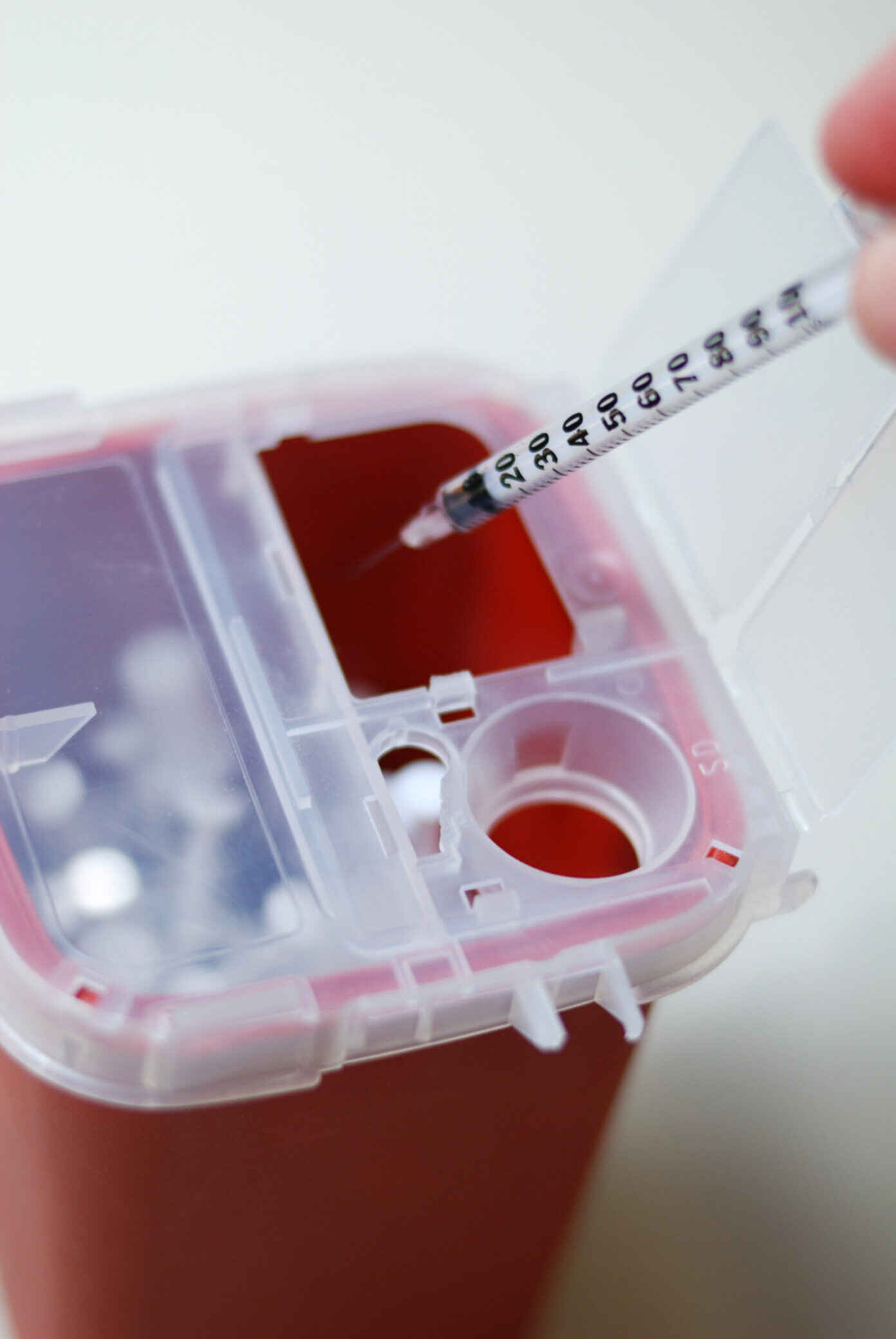Some States Unwisely Cling to One-to-One Syringe Exchange Instead of Evidence Based Needs-Based Distribution
April 1, 2024
Overview
Syringe services programs (SSPs) are crucial legal and health intervention and multiple studies have shown the best model for SSPs is needs-based syringe distribution, in which SSP participants are provided with the quantity of supplies they need to use safely. Yet, many states require participants to return a used needle for every new needle they are given, resulting in undue health risks and other harms.

Access to new injection equipment such as needles and syringes is essential to reducing the risk of HIV, viral hepatitis, and other communicable diseases among people who use drugs and their communities. Syringe services programs (SSPs) are a crucial legal and health intervention, as most states criminalize possession and distribution of syringes, providing only limited carveouts for SSPs to distribute syringes and other harm reduction equipment and for SSP participants to possess them.
Multiple studies have shown the best model for SSPs is needs-based syringe distribution, in which SSP participants are provided with the quantity of supplies they need to use safely. This model is supported by the Center for Disease Control and Prevention and the Substance Abuse and Mental Health Services Administration. Under a one-to-one model, conversely, a person may only receive as many syringes as they bring to the program for disposal. This limitation requires SSP participants to collect and keep syringes until they can return to the program rather than safely disposing of them as soon as they are able.
This restriction increases the chances of needlestick injury and the likelihood that the person will be arrested and prosecuted for paraphernalia possession. Even where there are protections for possession of paraphernalia when acquired from an SSP, limitations in these laws include only providing protections within the vicinity of the program or other specified locations or only providing protections for employees and volunteers of a program, not for the receiving participants.
In the Network for Public Health Law’s Harm Reduction Legal Project’s Fall 2023 review of state syringe access laws, we found two states that still maintain one-to-one exchange requirements for SSPs — Florida and Hawaii. In addition, two states, Tennessee and West Virginia, include language that requires SSPs to have a “goal of” or to “strive for” one-to-one exchange. Maine also requires that an SSP “allow for” one-to-one exchange in its regulations, but a program may provide up to 100 syringes to a person who has no syringes to exchange. This law is in conflict with another Maine law that does not prohibit free distribution of syringes, as syringes are not considered “drug paraphernalia.” This means anyone could distribute new syringes in any quantity from any location, except an authorized “hypodermic apparatus exchange program,” where they are restricted in the quantity they can distribute.
While the language in Tennessee and West Virginia may be difficult to enforce and the law in Maine contains exceptions, the laws in these five states show a deliberate failure to follow evidence-based practices that are essential to effective syringe services programming and the reduction of blood-borne infectious diseases such as HIV and viral hepatitis. On the bright side, in August 2023, Delaware changed its syringe services law from one-to-one exchange to a needs-based requirement, aligning state law with evidence-based practices.
In a broader sense, SSP laws themselves are a failure to follow the evidence. While SSPs are important public health interventions and their authorization and evidence-based implementation is a step in the right direction, the simplest and most effective way to increase access to syringes and other safer drug use supplies is to fully decriminalize drug paraphernalia possession and distribution, as Minnesota did in 2023. Where such change is not yet politically possible, states should ensure that SSPs are permitted to distribute as many syringes — and other supplies — as needed to help keep their communities safe.
This post was written by Ashleigh Dennis, Staff Attorney, Network for Public Health Law —Harm Reduction Legal Project.
The Network for Public Health Law provides information and technical assistance on issues related to public health. The legal information and assistance provided in this document do not constitute legal advice or legal representation. For legal advice, readers should consult a lawyer in their state.
Support for the Network is provided by the Robert Wood Johnson Foundation (RWJF). The views expressed in this post do not represent the views of (and should not be attributed to) RWJF.
